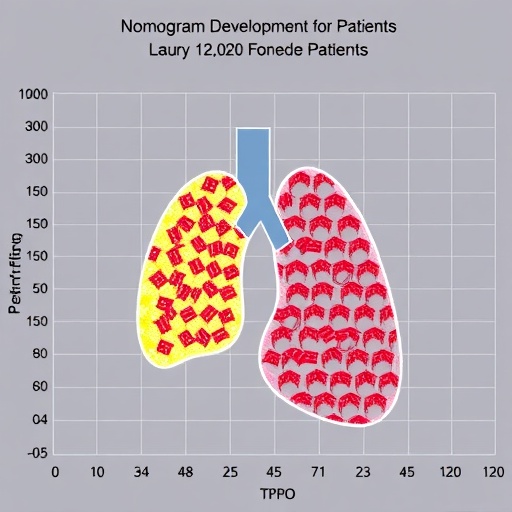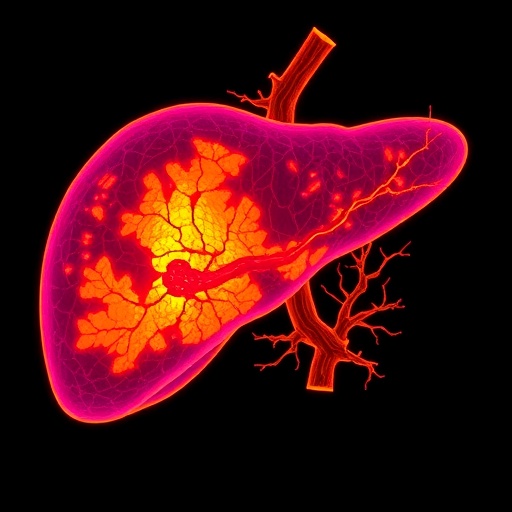
In a groundbreaking study that aims to enhance the prognostic capabilities for hepatocellular carcinoma (HCC) patients, researchers have developed and validated a detailed nomogram based on the HCC-GRIm score. Hepatocellular carcinoma is one of the deadliest forms of liver cancer, often diagnosed at an advanced stage, which complicates treatment outcomes and overall survival rates. With the rising prevalence of liver disease globally, effective prognostication tools are critically necessary. The newly proposed nomogram could serve as a pivotal asset for clinicians seeking to tailor their therapeutic approaches to individual patient profiles.
This comprehensive research conducted by a team led by authors Yu, Yang, and He focuses on integrating clinical, pathological, and biochemical factors into their predictive model. The HCC-GRIm score itself is derived from a combination of several key variables, contributing significantly to understanding the complexities of HCC progression. By utilizing this multifaceted score, the research team has succeeded in formulating a sophisticated tool that could materially shift current paradigms in HCC management and treatment strategies.
The study involved meticulous statistical analyses which provided robust validation for their nomogram. Researchers utilized a cohort of patients diagnosed with HCC, carefully evaluating various parameters like tumor size, liver function tests, and overall health status. By synthesizing these components, the nomogram not only estimates a patient’s prognosis but also customizes treatment protocols based on predicted disease trajectories. This predictive capability is essential, particularly in a disease landscape defined by significant heterogeneity among patients.
Prior to this study, prognostic tools were limited in scope and often could not provide an accurate prediction of survival outcomes for HCC patients. Existing models typically relied on fewer clinical indicators, offering a more generalized outlook devoid of personalized insights. The introduction of the HCC-GRIm score has undeniably filled that gap; however, the development of this nomogram represents a crucial evolution in making real-time clinical decisions based on dynamic patient information.
The practical implementation of the HCC-GRIm-based nomogram has the potential to not only improve survivorship rates but also ensure that patients undergo the most effective therapies available. Clinicians can now access precise risk stratification, allowing for the adjustment of treatment plans according to the unique prognoses that the nomogram generates. As a result, healthcare providers can optimize the timing of interventions, whether surgical, medical, or palliative, leading to improved quality of life for patients.
Beyond individual prognostication, this novel tool could also have implications for broader population-level analyses. Researchers anticipate that incorporating the nomogram into health systems could foster improved cancer registry data, giving insights into treatment outcomes across different demographic and clinical backgrounds. It may also enhance clinical trials by stratifying participants based on predicted outcomes, thereby refining the selection criteria and improving the interpretability of results.
It is essential to consider the integration of the HCC-GRIm nomogram into clinical settings as it faces challenges—most notably, the need for clinician training and acceptance. Acceptance of new technologies in healthcare often takes time as healthcare professionals must become familiar with new scoring systems. To mitigate this, statistical workshops and training sessions could facilitate quicker adaptation, allowing practitioners to fully harness the benefits of this innovative tool.
Additionally, attention must also be given to ongoing research aimed at refining the nomogram further. Future studies could explore the integration of genetic and molecular markers, which are increasingly recognized as significant in personalized medicine. By enriching the nomogram with such biomarkers, the predictive power could be enhanced, paving the way for more precise risk stratification and individualized care for HCC patients.
As researchers look ahead, there is an increasing recognition that collaboration across disciplines will be paramount for continued advancement in cancer research and treatment modalities. The successful validation and potential application of the HCC-GRIm nomogram in clinical settings could set a precedent for similar approaches in other types of cancers. The aim is to utilize this knowledge not only to advance HCC management but also to set the benchmark for future oncological prognostic models.
Furthermore, the societal implications of better prognostic tools cannot be understated. By improving patient outcomes, there would be significant positive impacts on healthcare systems around the world. Reduced healthcare costs associated with advanced cancers and optimized resource utilization in oncology wards are tangible benefits that further justify the efforts invested in this research.
In conclusion, the construction and validation of the nomogram based on the HCC-GRIm score signify an essential advancement in the personalized treatment landscape for hepatocellular carcinoma. By focusing on statistical validity and clinical applicability, this tool is poised to revolutionize how clinicians assess and treat HCC patients, ultimately aiming for improved survival rates and enhanced quality of life. As ongoing studies continue to refine and enhance these prognostic tools, the future of HCC treatment appears more promising than ever, laying the foundation for potentially life-saving interventions tailored to each patient’s unique needs.
Subject of Research: Hepatocellular carcinoma prognostication and personalized treatment
Article Title: Correction: Construction and validation of a nomogram for hepatocellular carcinoma patients based on HCC-GRIm score.
Article References:
Yu, X., Yang, R., He, Z. et al. Correction: Construction and validation of a nomogram for hepatocellular carcinoma patients based on HCC-GRIm score. J Cancer Res Clin Oncol 151, 216 (2025). https://doi.org/10.1007/s00432-025-06251-5
Image Credits: AI Generated
DOI:
Keywords: Hepatocellular carcinoma, HCC-GRIm score, prognostic nomogram, personalized medicine
Tags: advanced liver disease managementclinical factors in HCCHCC-GRIm score validationhepatocellular carcinoma patient outcomesHepatocellular carcinoma prognosisliver cancer survival ratesliver cancer treatment strategiesnomogram development for liver cancerpersonalized medicine for liver cancerpredictive modeling in oncologyprognostic tools in hepatologystatistical analysis in cancer research




